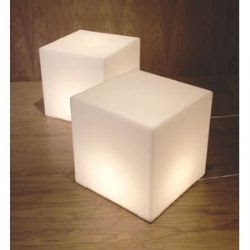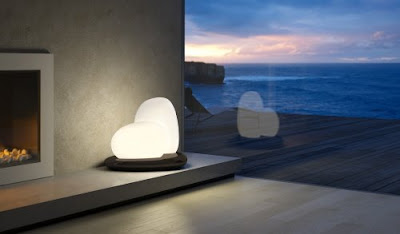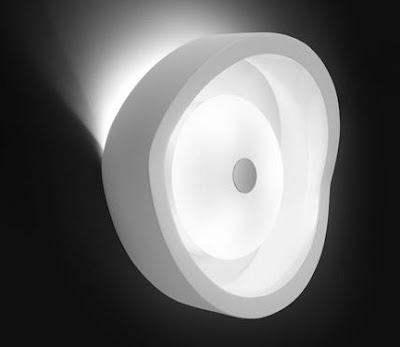


By Michael Russell
Michael Russel
Michael Russel
If you want to keep up with the latest trends in home design and lighting you should probably go beyond the usual standards, ignore all the advice given to you by professional interior designers and go for a personal style. At least this is the latest trend.
With so many models, coming in all possible sizes and shapes, people find it easier to opt for a personal style when decorating the interiors of their residences, at least when it comes to lighting fixtures. This phenomenon has a simple explanation: the use of light is no longer reduced to simple illumination purposes, but goes further than this status towards self-expression, mood lighting, accent lighting, architectural lighting and even landscape lighting.
The choice of lighting products is increasing also due to the various lighting technologies that bring different advantages to the consumers and are used in different applications. If light fixtures designers are living a moment of glory, lighting designers are facing a real dilemma; clients prefer to choose the lighting fixtures alone and employ light technicians to mount them. This doesn't mean that lighting design is a profession doomed to be outshone! It's probably just a phase until consumers realize that only a professional designer can create a interrelated structure between illumination, structural design and interior decoration.
But most of the users still choose the lighting fixtures alone and their choices vary between three "root-styles": elegant, traditional and contemporary. The average consumers choose their light sources based on price (cheaper are winning), but some take into consideration other factors as well and the most important is energy efficiency. Although energy efficient luminaries are more expensive, they help cut back electricity consumption. You probably already have in your home a reading lamp with dimmer switch or other light sources of the kind. Dimming the light is one way to cut back costs but it also saves energy and extends lamp life. Compact-fluorescent lamps and light emitting diodes (LEDs) are also very popular choices.
Lighting is not used solely overhead, as it used to be. Today light sources can be used to create a mysterious atmosphere, to enhance the mood of a room or to spotlight an artwork. When it comes to mood lighting, there's nothing better than concealed light sources to highlight a painting or backlights to generate a warm glow behind curtains or pieces of furniture. When it comes to mounting the lights in their homes people become more and more creative. Nowadays it's almost usual to see special lighting effects on the walls of the living room, as usual as it is to see dimmers and solar garden lamps.
Consumers react differently to lighting and lighting objects. Some even buy based on "I like it" more then on "I need it". Let's face it: do you really need a LED cube with a wooden frame to impress your guests or a mood light panel to relax? Not really. But this type of lighting products sells like crazy nowadays and a the trend will probably grow.
With so many models, coming in all possible sizes and shapes, people find it easier to opt for a personal style when decorating the interiors of their residences, at least when it comes to lighting fixtures. This phenomenon has a simple explanation: the use of light is no longer reduced to simple illumination purposes, but goes further than this status towards self-expression, mood lighting, accent lighting, architectural lighting and even landscape lighting.
The choice of lighting products is increasing also due to the various lighting technologies that bring different advantages to the consumers and are used in different applications. If light fixtures designers are living a moment of glory, lighting designers are facing a real dilemma; clients prefer to choose the lighting fixtures alone and employ light technicians to mount them. This doesn't mean that lighting design is a profession doomed to be outshone! It's probably just a phase until consumers realize that only a professional designer can create a interrelated structure between illumination, structural design and interior decoration.
But most of the users still choose the lighting fixtures alone and their choices vary between three "root-styles": elegant, traditional and contemporary. The average consumers choose their light sources based on price (cheaper are winning), but some take into consideration other factors as well and the most important is energy efficiency. Although energy efficient luminaries are more expensive, they help cut back electricity consumption. You probably already have in your home a reading lamp with dimmer switch or other light sources of the kind. Dimming the light is one way to cut back costs but it also saves energy and extends lamp life. Compact-fluorescent lamps and light emitting diodes (LEDs) are also very popular choices.
Lighting is not used solely overhead, as it used to be. Today light sources can be used to create a mysterious atmosphere, to enhance the mood of a room or to spotlight an artwork. When it comes to mood lighting, there's nothing better than concealed light sources to highlight a painting or backlights to generate a warm glow behind curtains or pieces of furniture. When it comes to mounting the lights in their homes people become more and more creative. Nowadays it's almost usual to see special lighting effects on the walls of the living room, as usual as it is to see dimmers and solar garden lamps.
Consumers react differently to lighting and lighting objects. Some even buy based on "I like it" more then on "I need it". Let's face it: do you really need a LED cube with a wooden frame to impress your guests or a mood light panel to relax? Not really. But this type of lighting products sells like crazy nowadays and a the trend will probably grow.

Labels: Lighting Lamp
1 comments:
Nice blog, here is some more information on Contemporary Lighting.
Post a Comment